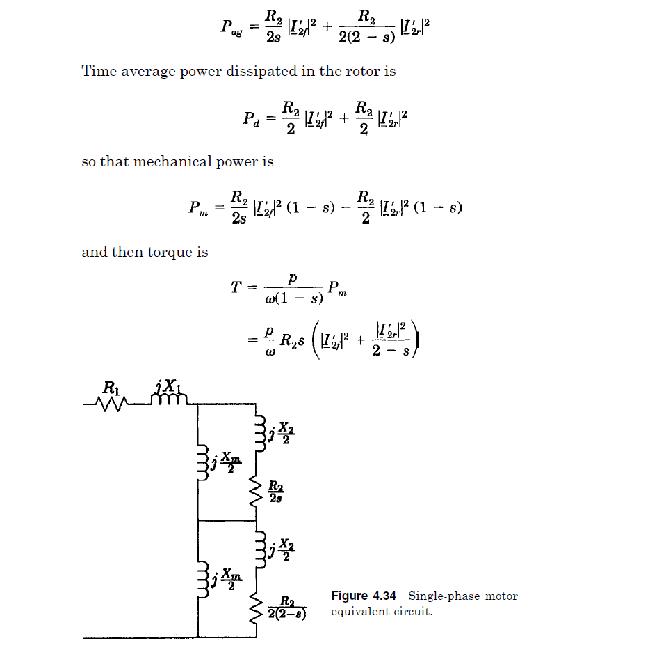Single-phase induction motors come in a wide range of topologies, but
in most cases, they are very similar to polyphase motors. The difference
is that they have only one active winding on the stator. Recalling the
development of winding inductances, express the space fundamental of
MMF produced by a single-phase, p pole-pair winding carrying current
i in N turns as
The result of Eq. (4.191) is illustrated in Fig. 4.33. The single-phase winding actually produces two traveling waves of MMF, each with half of the amplitude of the winding MMF. One rotates forward at synchronous speed and the other rotates backward at the same speed.
The rotor of the machine interacts with both of these MMF waves. If the
rotor is “round,” or uniform in its azimuthal direction, and if the rotor is
not heavily saturated so that the flux-MMF interaction is linear, the interactions of the two MMF waves with the rotor are independent of
each other.
Assume that the rotor supports two independent MMF waves—one
rotating forward and the other backward—and that the currents,
referred to the stator, are I2f and I2r, respectively. Assuming a common
reference, the two rotor currents will induce a flux in the armature
winding
in most cases, they are very similar to polyphase motors. The difference
is that they have only one active winding on the stator. Recalling the
development of winding inductances, express the space fundamental of
MMF produced by a single-phase, p pole-pair winding carrying current
i in N turns as
The result of Eq. (4.191) is illustrated in Fig. 4.33. The single-phase winding actually produces two traveling waves of MMF, each with half of the amplitude of the winding MMF. One rotates forward at synchronous speed and the other rotates backward at the same speed.
The rotor of the machine interacts with both of these MMF waves. If the
rotor is “round,” or uniform in its azimuthal direction, and if the rotor is
not heavily saturated so that the flux-MMF interaction is linear, the interactions of the two MMF waves with the rotor are independent of
each other.
Assume that the rotor supports two independent MMF waves—one
rotating forward and the other backward—and that the currents,
referred to the stator, are I2f and I2r, respectively. Assuming a common
reference, the two rotor currents will induce a flux in the armature
winding




No comments:
Post a Comment